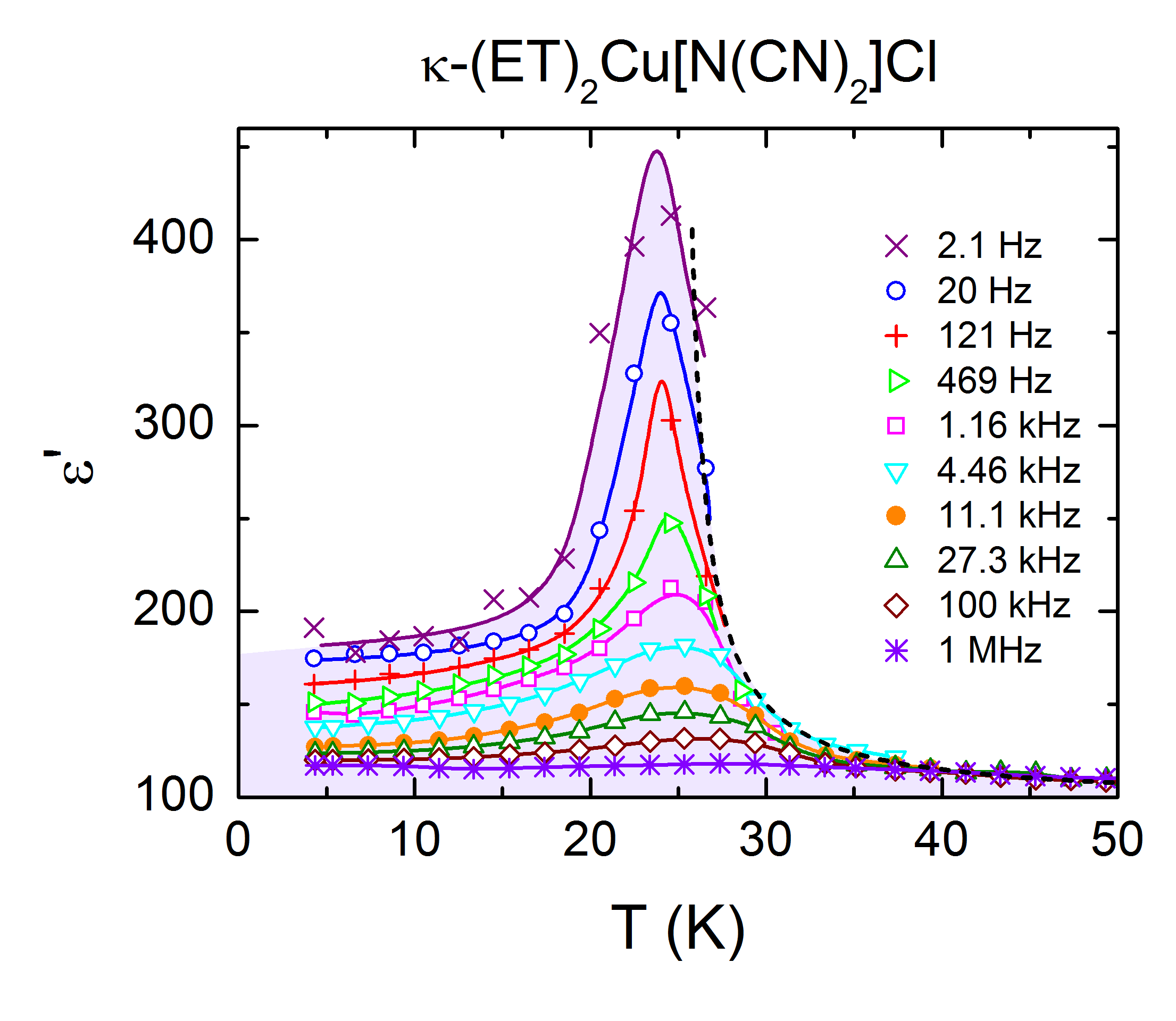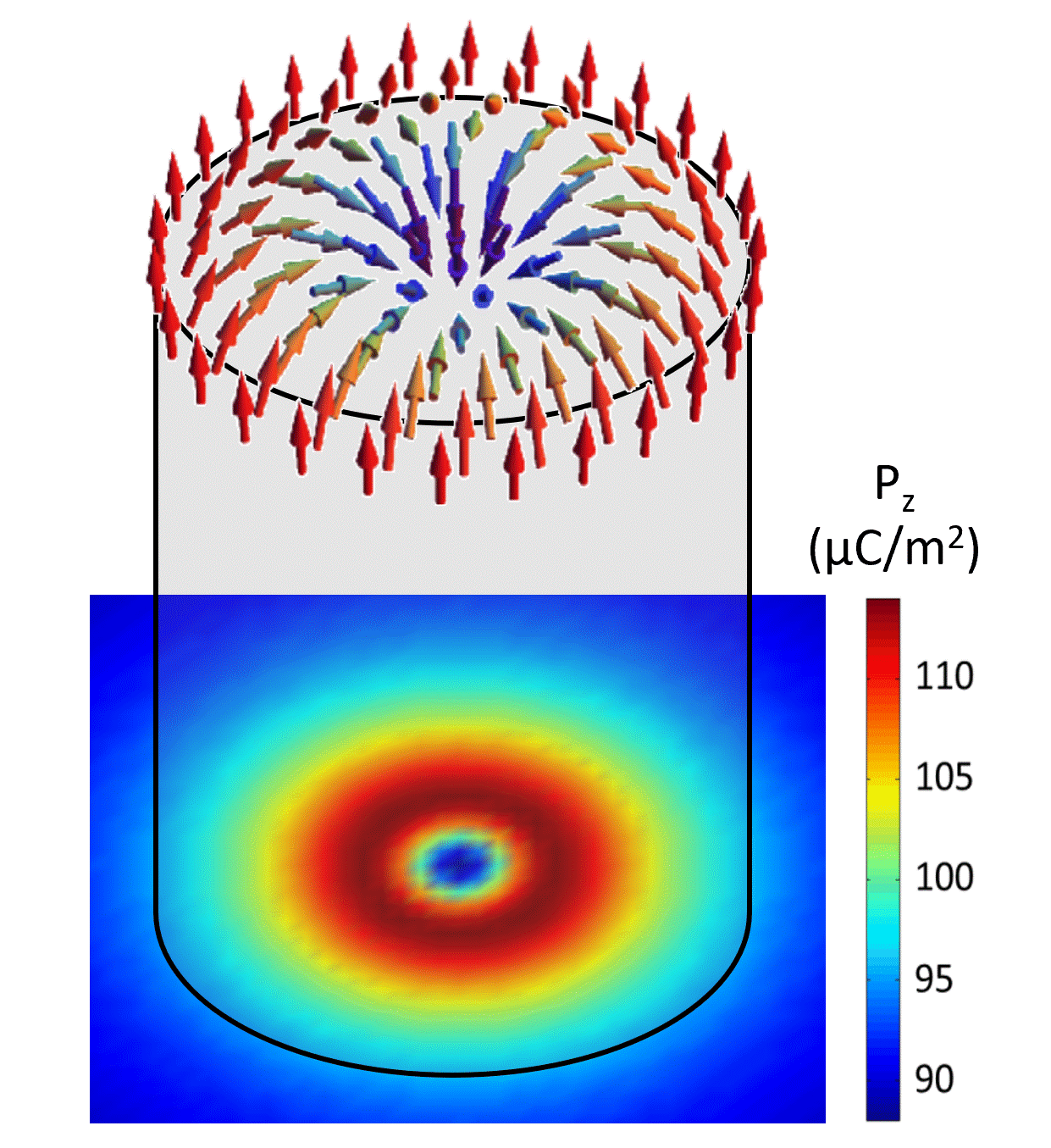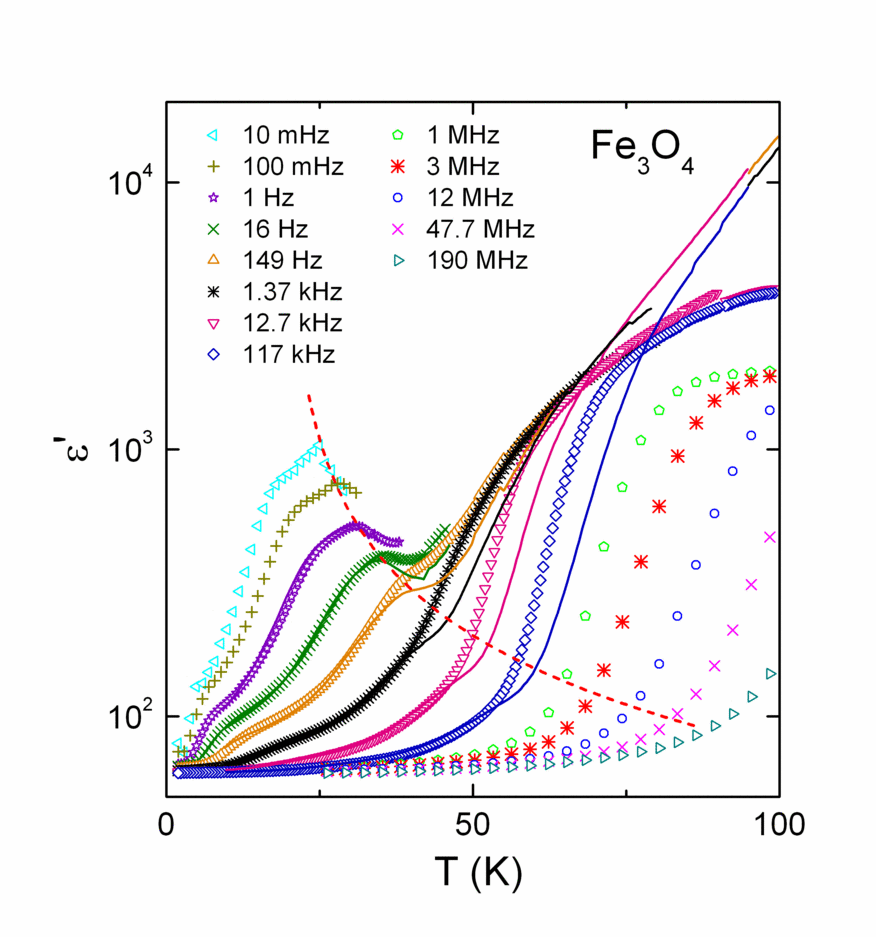| [1] |
Relaxor ferroelectricity and colossal magneto-capacitive coupling in ferromagnetic CdCr2S4
J. Hemberger, P. Lunkenheimer, R. Fichtl, H.-A. Krug von Nidda, V. Tsurkan, and A. Loidl,
Nature 434, 364 (2005).
|
| [2] |
Switching the ferroelectric polarization in the S = 1/2 chain cuprate LiCuVO4 by
external magnetic fields
F. Schrettle, S. Krohns, P. Lunkenheimer, J. Hemberger, N. Büttgen, H.-A. Krug von Nidda, A.V. Prokofiev, and A. Loidl,
Phys. Rev. B 77, 144101 (2008).
[PDF]
|
| [3] |
Relaxations as key to the magnetocapacitive effects in the perovskite manganites
F. Schrettle, P. Lunkenheimer, J. Hemberger, V.Yu. Ivanov, A.A. Mukhin, A.M. Balbashov, and A. Loidl,
Phys. Rev. Lett. 102, 207208 (2009).
[PDF]
|
| [4] |
On the room temperature multiferroic BiFeO3: magnetic, dielectric and thermal properties
J. Lu, A. Günther, F. Schrettle, F. Mayr, S. Krohns, P. Lunkenheimer, A. Pimenov, V.D. Travkin, A.A. Mukhin, and A. Loidl,
Eur. Phys. J. B 75, 451 (2010).
|
| [5] |
Relaxor ferroelectricity and the freezing of short-range polar order in magnetite
F. Schrettle, S. Krohns, P. Lunkenheimer, V.A.M. Brabers, and A. Loidl,
Phys. Rev. B 83, 195109 (2011).
[PDF]
|
| [6] |
Multiferroicity and skyrmions carrying electric polarization in GaV4S8
E. Ruff, S. Widmann, P. Lunkenheimer, V. Tsurkan, S. Bordács, I. Kézsmárki, and A. Loidl,
Science Advances, 1, E1500916 (2015).
[PDF]
|
| [7] |
Multiferroicity in an organic charge-transfer salt that is suggestive of electric-dipole driven magnetism
P. Lunkenheimer, J. Müller, S. Krohns, F. Schrettle, A. Loidl, B. Hartmann, R. Rommel, M. de Souza, C. Hotta, J.A. Schlueter, and M. Lang,
Nature Mater. 11, 755 (2012).
|
| [8] |
Magnetic-field induced multiferroicity in a quantum critical frustrated spin liquid
F. Schrettle, S. Krohns, P. Lunkenheimer, A. Loidl, E. Wulf, T. Yankova, and A. Zheludev,
Phys. Rev. B 87, 121105(R) (2013).
[PDF]
|
| [9] |
Magnetoelectric effects in the skyrmion host material Cu2OSeO3
E. Ruff, P. Lunkenheimer, A. Loidl, H. Berger, and S. Krohns,
Sci. Rep. 5, 15025 (2015).
[PDF]
|
| [10] |
Polar dynamics at the Jahn-Teller transition in ferroelectric GaV4S8
Z. Wang, E. Ruff, M. Schmidt, V. Tsurkan, I. Kézsmárki, P. Lunkenheimer, and A. Loidl,
Phys. Rev. Lett. 115, 207601 (2015).
[PDF]
|
| [11] |
Polar and magnetic order in GaV4Se8
E. Ruff, A. Butykai, K. Geirhos, S. Widmann, V. Tsurkan, E. Stefanet, I. Kézsmárki, A. Loidl, and P. Lunkenheimer,
Phys. Rev. B 96, 165119 (2017).
[PDF]
|
| [12] |
Conductivity contrast and tunneling charge transport in the vortexlike ferroelectric Domain Patterns
of multiferroic hexagonal YMnO3
E. Ruff, S. Krohns, M. Lilienblum, D. Meier, M. Fiebig, P. Lunkenheimer, and A. Loidl,
Phys. Rev. Lett. 118, 036803 (2017).
[PDF]
|
| [13] |
Orbital-order driven ferroelectricity and dipolar relaxation dynamics in multiferroic
GaMo4S8
K. Geirhos, S. Krohns, H. Nakamura, T. Waki, Y. Tabata, I. Kézsmárki, and P. Lunkenheimer,
Phys. Rev. B 98, 224306 (2018).
[PDF]
|
| [14] |
Chirality-driven ferroelectricity in LiCuVO4
A. Ruff, P. Lunkenheimer, H.-A. Krug von Nidda, S. Widmann, A. Prokofiev, L. Svistov, A. Loidl, and S. Krohns,
Npj Quantum Mater. 4, 24 (2019).
[PDF]
|
| [15] |
Multiferroic spin-superfluid and spin-supersolid phases in MnCr2S4
A. Ruff, Z. Wang, S. Zherlitsyn, J. Wosnitza, S. Krohns, H.-A. Krug von Nidda, P. Lunkenheimer, V. Tsurkan, and A. Loidl,
Phys. Rev. B 100, 014404 (2019).
[PDF]
|


